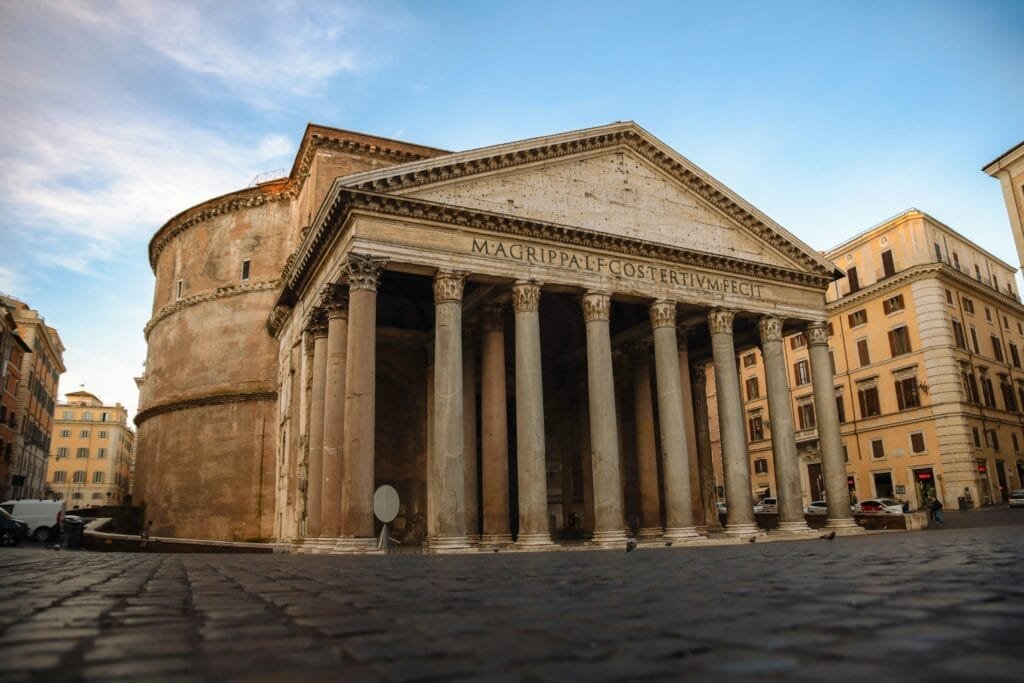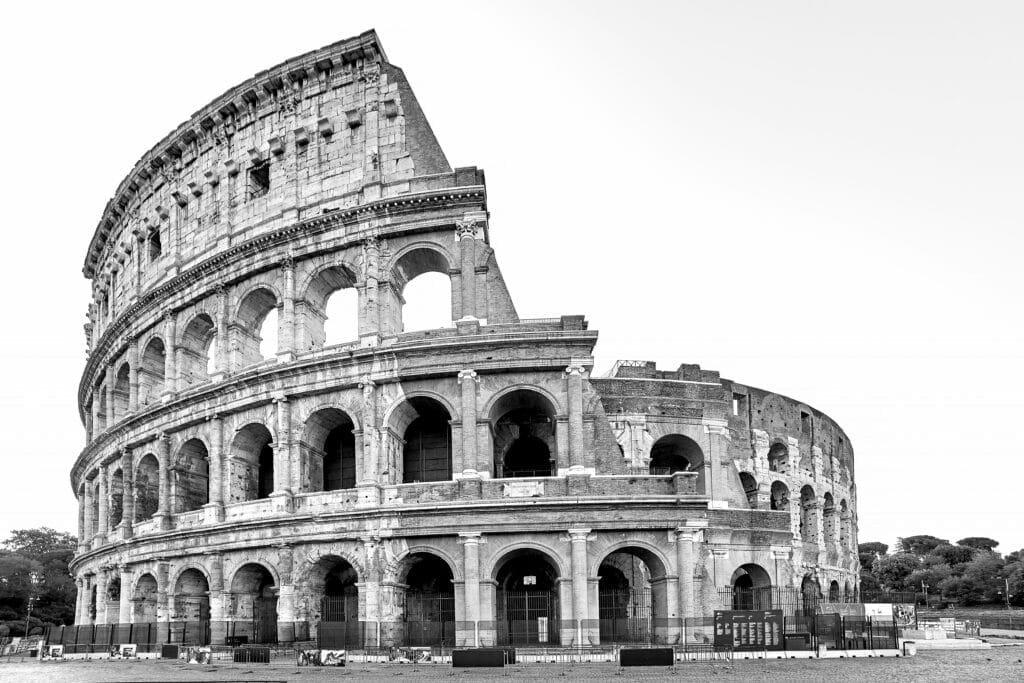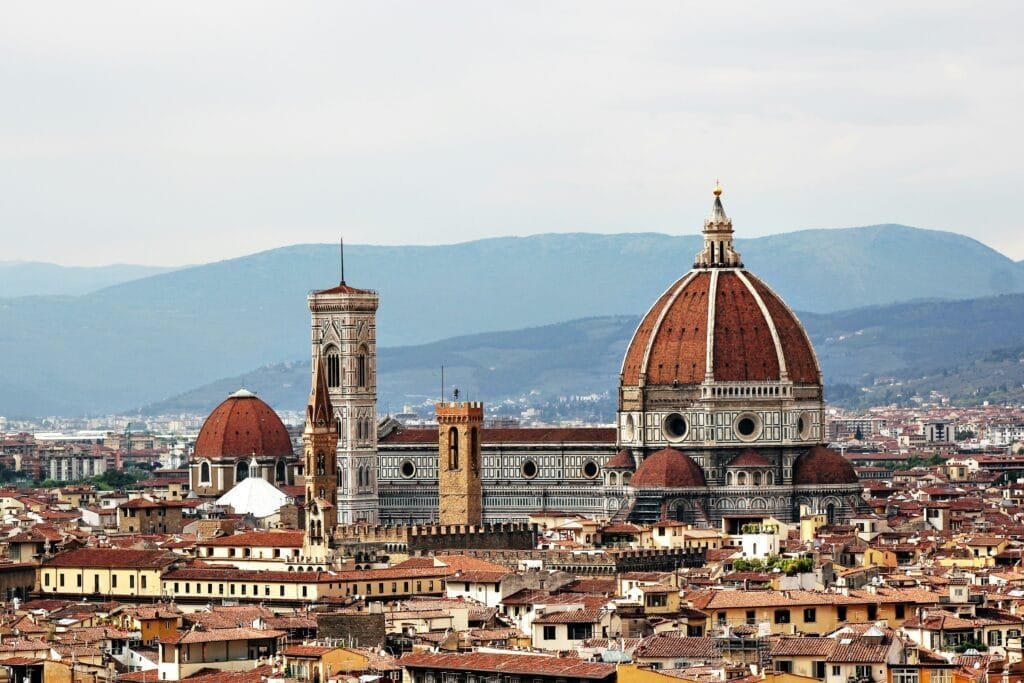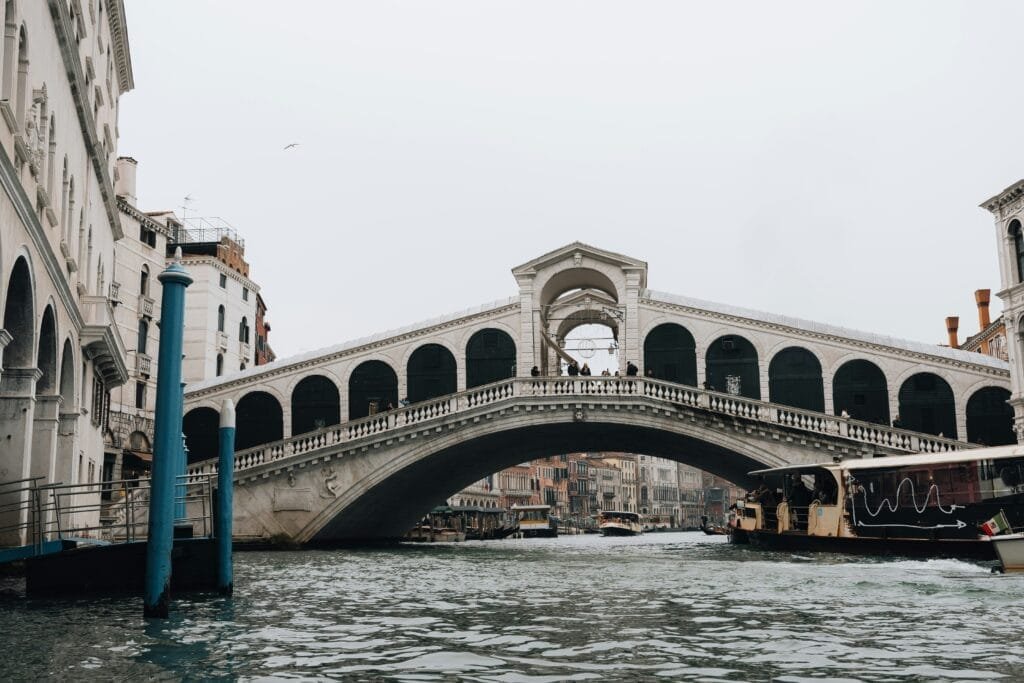A Journey Through Time: The Must-See Places in Italy

Close your eyes and imagine for a moment: you are standing in an arena where the roar of gladiators still echoes after thousands of years. You step into a gallery where a marble statue is so realistic you can almost feel the blood coursing through its veins. Or you lose yourself in the narrow streets of a city surrounded by water, hearing the whispers of the Doges who once ruled the world. This is Italy. Not just a country shaped like a boot, but a living, breathing archive of Western civilization, built layer upon layer.
In this article, we will explore the power of Rome, the elegance of Florence, and the mystery of Venice. If you’re ready, our journey through time begins. Here are the must-see places in Italy…
The Eternal City: The Legacy of Rome
Rome… Not just a city, but a living museum where an empire was born, rose, and transformed; where you can hear the whispers of history in every street. Every step you take here is to follow in the footsteps of Caesar, Augustus, and Michelangelo. Come, let’s discover the most iconic legacies of this eternal city together.
The Arena of Gladiators: Echoes of the Colosseum
When one thinks of Rome, the first structure that comes to mind is undoubtedly the Colosseum. Rising like a giant in the heart of the city, this amphitheater is an immortal symbol of the Roman Empire’s power and engineering genius. Originally named the Flavian Amphitheatre, it takes its name from the Flavian dynasty that commissioned it. Its construction began under Emperor Vespasian in 72 A.D. and was completed with magnificent ceremonies in 80 A.D. during the reign of his son, Titus. The Colosseum was not just a venue for entertainment but also a political monument that showcased the dynasty’s power to the people.
Inside, tens of thousands of Romans watched with bloodthirsty excitement as gladiators fought to the death, exotic animals were hunted (venationes), and public executions were held. These bloody spectacles tell us much about the social structure and entertainment culture of Roman society. Its architecture is a marvel in itself. Built from travertine stone, tuff, and the Roman invention of concrete, the structure could seat and evacuate more than 50,000 spectators in minutes, thanks to its more than 80 entrances and complex system of corridors.
With the fall of the empire, the fate of the Colosseum changed. For centuries, it was used as a quarry, a housing complex, a workshop, and even a fortress. In the 18th century, Pope Benedict XIV declared the arena a sacred site in memory of the Christian martyrs believed to have been killed there, a decision that saved the structure from further destruction.

The Heart of the Empire: The Roman Forum and Palatine Hill
Stretching out right next to the Colosseum, the Roman Forum (Forum Romanum) was where the heart of ancient Rome once beat. This was the commercial, legal, religious, and social center of the empire. Though it may look like a field of ruins today, every stone and column has a story.
Imagine senators debating the fate of the empire in the Curia (Senate House), orators like Cicero addressing the public from the Rostra, merchants negotiating in the basilicas (halls of justice and commerce), and Vestal Virgins keeping the sacred fire alive in the Temple of Vesta. To walk through the Forum is not just to see historical ruins, but to touch the ground where Julius Caesar walked and Augustus shaped an empire.
Overlooking the Forum, Palatine Hill was Rome’s most prestigious “residential area.” According to legend, it was on this hill that the city’s founders, Romulus and Remus, were found and raised by a she-wolf. Throughout history, emperors (Augustus, Tiberius, Domitian) and wealthy Romans built their magnificent palaces and villas on this hill, which commanded views of the city and the Forum. Today, as you wander among the ruins of these palaces, you can feel the splendor of ancient Rome’s luxurious life and its center of power.
The Pinnacle of Architecture: The Breathtaking Dome of the Pantheon
The best-preserved ancient structure in Rome, the Pantheon is a monument to architectural genius. Meaning “temple of all the gods,” it was first built by Marcus Agrippa but was completely rebuilt by Emperor Hadrian between 113-125 A.D. after being damaged by fires.
What makes the Pantheon so special is its massive dome. With a diameter of about 43.3 meters (142 feet), it remains the world’s largest unreinforced concrete dome and has stood for nearly 2,000 years. At its apex is a 9-meter (27-foot) circular opening, the Oculus (“eye”), which is the building’s only source of natural light. The beam of light filtering through the Oculus moves across the interior throughout the day, acting like a sundial and lending the space a mystical atmosphere. This opening also represents the building’s symbolic connection to the heavens and the gods.
The primary reason the Pantheon has survived in such excellent condition is its conversion into a Christian church in the 7th century. This transformation protected it from the destruction of the Middle Ages and prevented its stones from being repurposed for other constructions.
The Birthplace of the Renaissance: The Artistic Soul of Florence
If Rome represents the power of an empire, Florence symbolizes the triumph of the human mind and creativity. This elegant city on the banks of the Arno River was the cradle of the Renaissance, a revolution in art, science, philosophy, and architecture that flourished between the 14th and 16th centuries. Under the patronage of powerful banking families like the Medici, geniuses such as Leonardo da Vinci, Michelangelo, Botticelli, and Brunelleschi thrived here.
Florence Cathedral and Brunelleschi’s Dome
The massive, red-tiled dome that dominates the Florentine skyline is the heart and soul of the city. The Cathedral of Santa Maria del Fiore, more commonly known as the Duomo, is a Gothic structure whose construction began in the 13th century. However, as the building progressed, engineers and architects faced an enormous problem: how to build a dome over the 45-meter (150-foot) wide opening at the center of the cathedral? With the technology of the time, it seemed impossible, and the top of the cathedral remained open for over a century.
The solution came from a competition held in 1418. The winner, a goldsmith and clockmaker named Filippo Brunelleschi, presented a revolutionary plan. Though inspired by the ancient Pantheon in Rome, he developed entirely new techniques. Instead of using traditional wooden scaffolding, Brunelleschi designed the dome to be self-supporting. He achieved this by using a double-shelled structure—one inner and one outer—and a special herringbone brick pattern that locked the bricks together.
Today, when you climb the 463 steps to the top of the dome, you are rewarded with a magnificent view of Florence.

Home of Masterpieces: An Art Tour at the Florence
One of the most important art museums in the world, the Uffizi Gallery is a veritable parade of Renaissance art. Originally built as government offices for the Medici family, who ruled Florence, the building was gradually converted into a gallery to display the family’s priceless art collection. Walking through the Uffizi, you lose yourself among masterpieces that changed the course of Western art. Here are a few you must see:
- Sandro Botticelli – The Birth of Venus: This iconic work, depicting the goddess of beauty arriving on shore on a seashell, perfectly reflects the Renaissance ideal of beauty and the renewed interest in Greco-Roman mythology.
- Leonardo da Vinci – Annunciation: Painted when Leonardo was still a young artist, this work is far ahead of its time with its use of perspective, the naturalism of the figures, and the detailed landscape in the background.
- Michelangelo – Doni Tondo: This is Michelangelo’s only finished panel painting in Florence. With its sculptural figures and vibrant colors, it proves the artist’s mastery in painting as well as sculpture.
- Caravaggio – Medusa: One of the most striking examples of the dramatic light-and-shadow (chiaroscuro) technique of Baroque art. It is believed that Caravaggio used his own face as a model for the severed head of the mythological, snake-haired monster. This work captures horror and tragedy with incredible realism.
Michelangelo’s Giant: The Accademia and the Statue of David
Another of Florence’s great treasures is Michelangelo’s David, standing in all its glory at the Accademia Gallery. Carved from a single, “flawed” block of marble, this colossal statue, over 5 meters (17 feet) tall, is one of the most recognized works in art history. It was originally commissioned to adorn the roof of the Duomo, but upon completion, it was deemed so perfect that it was decided to place it in the Piazza della Signoria, the city’s political center.
The Republic on the Water: The Magic of Venice
Canals, gondolas, masks, and palaces… Venice is a fairytale land unlike any other place in the world. The architecture and art of Venice reflect the unique character, wealth, and deep ties to the East of this maritime republic.
Power and Splendor: The Doge’s Palace
The political and administrative heart of Venice is the Doge’s Palace (Palazzo Ducale), which rises with all its elegance in St. Mark’s Square. For a thousand years, this building was not only the official residence of the Doge, the elected leader who ruled the Republic of Venice, but also a multifunctional center that housed government offices, law courts, and even a prison.
The palace is the most magnificent example of the unique Venetian Gothic style. Rooms like the Golden Staircase (Scala d’Oro) and the Great Council Hall, adorned with enormous paintings by Venetian masters such as Tintoretto and Veronese, display the opulence of Venice.
One of the most poignant spots in the palace is the enclosed bridge that connects the courtrooms to the new prisons behind the palace: the Bridge of Sighs (Ponte dei Sospiri). According to legend, as prisoners crossed this bridge, they would take one last look at the beauty of Venice and their freedom, and sigh. This bridge symbolizes both the grandeur and the ruthlessness of the Venetian justice system.
The City’s Heartbeat: St. Mark’s Square and the Rialto Bridge
All of Venetian life revolves around St. Mark’s Square (Piazza San Marco). Described by Napoleon as “the drawing room of Europe,” this vast square is both the religious and social center of the city. Flanked by St. Mark’s Basilica and the Doge’s Palace on one side, and historic cafes and elegant shops on the others, the square offers the elegance and vibrancy of Venice all at once. The Bell Tower (Campanile) rising at the corner of the square is one of the most recognizable structures of the Venetian skyline, and from its top, one can enjoy breathtaking views of the city and the lagoon.
Another iconic symbol of Venice is the Rialto Bridge (Ponte di Rialto), the oldest and most famous bridge over the Grand Canal (Canal Grande). For centuries, this stone bridge was the only crossing point and the commercial heart of Venice. With its shops and perpetually lively atmosphere, the Rialto remains one of the city’s most bustling spots today.

Seasonal Guide for Your Italy Trip:
| Season | Weather | Crowds | Pros | Cons |
|---|---|---|---|---|
| Spring (Apr-May) | Mild & Sunny | Medium | Ideal sightseeing weather, fewer crowds, nature in bloom. | Occasional rain showers. |
| Summer (Jun-Aug) | Very Hot & Humid | Very High | Long days, opportunities for a beach holiday in the south. | Overwhelming heat, extreme crowds, high prices. |
| Autumn (Sep-Oct) | Mild & Pleasant | Medium | Enjoyable weather, dwindling crowds, harvest season. | Days get shorter, rain increases in October. |
| Winter (Nov-Mar) | Cold | Low | Tranquility, lower prices, Christmas markets. | Cold weather, short days, some attractions may be closed. |
A Never-Ending Story
As we come to the end of our journey in Italy, we realize that nothing truly ends. The stones of the Colosseum, the canvases of the Uffizi, the canals of Venice… As you travel through these lands, you become not just a tourist, but a time traveler. In every corner, in every ruin, you find a piece of humanity’s shared memory.
So, which of these places would you most like to visit?
🎧 You can also listen to this article as a podcast (created with NotebookLM).